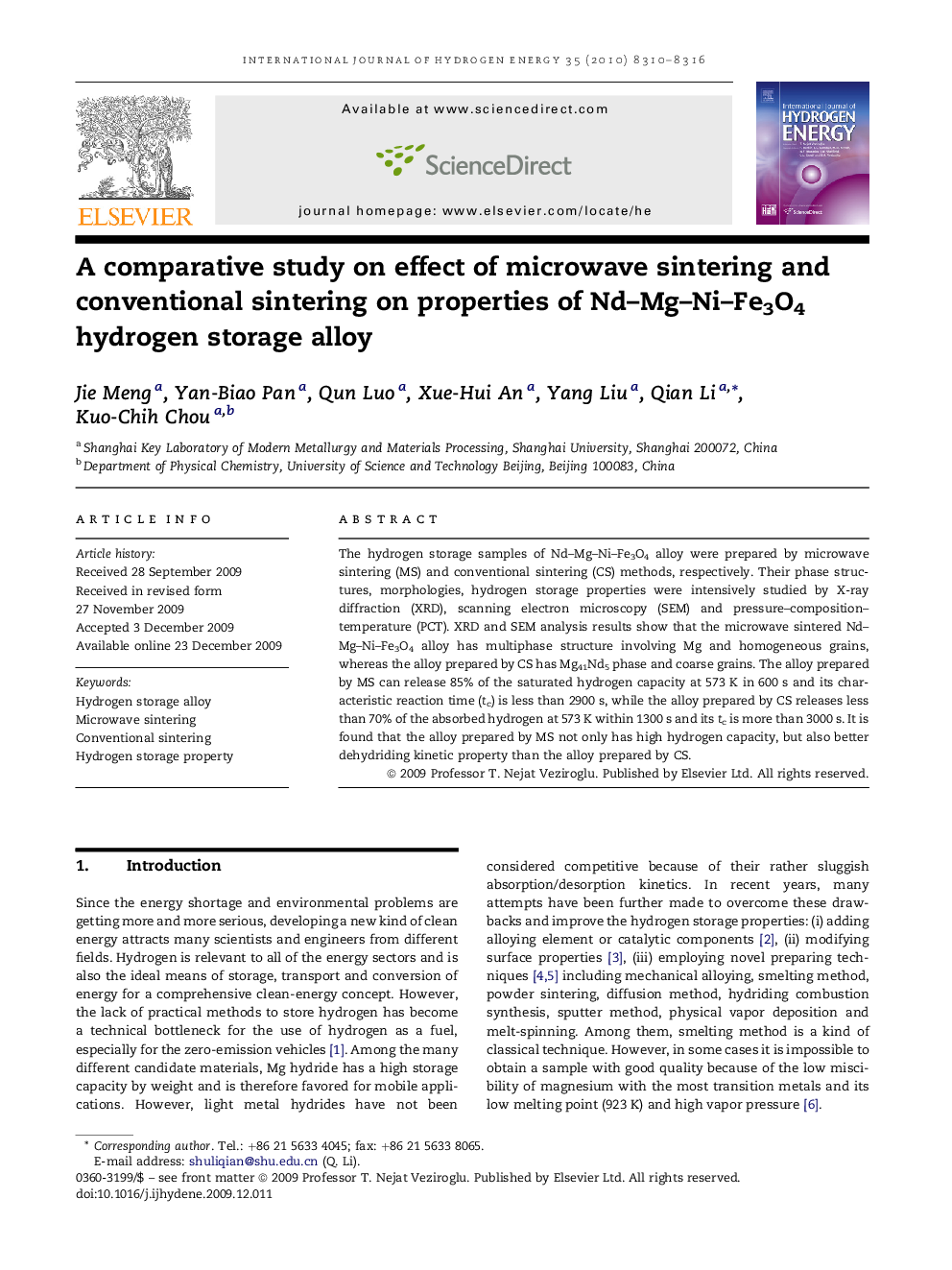| Article ID | Journal | Published Year | Pages | File Type |
|---|---|---|---|---|
| 1278024 | International Journal of Hydrogen Energy | 2010 | 7 Pages |
The hydrogen storage samples of Nd–Mg–Ni–Fe3O4 alloy were prepared by microwave sintering (MS) and conventional sintering (CS) methods, respectively. Their phase structures, morphologies, hydrogen storage properties were intensively studied by X-ray diffraction (XRD), scanning electron microscopy (SEM) and pressure–composition–temperature (PCT). XRD and SEM analysis results show that the microwave sintered Nd–Mg–Ni–Fe3O4 alloy has multiphase structure involving Mg and homogeneous grains, whereas the alloy prepared by CS has Mg41Nd5 phase and coarse grains. The alloy prepared by MS can release 85% of the saturated hydrogen capacity at 573 K in 600 s and its characteristic reaction time (tc) is less than 2900 s, while the alloy prepared by CS releases less than 70% of the absorbed hydrogen at 573 K within 1300 s and its tc is more than 3000 s. It is found that the alloy prepared by MS not only has high hydrogen capacity, but also better dehydriding kinetic property than the alloy prepared by CS.
